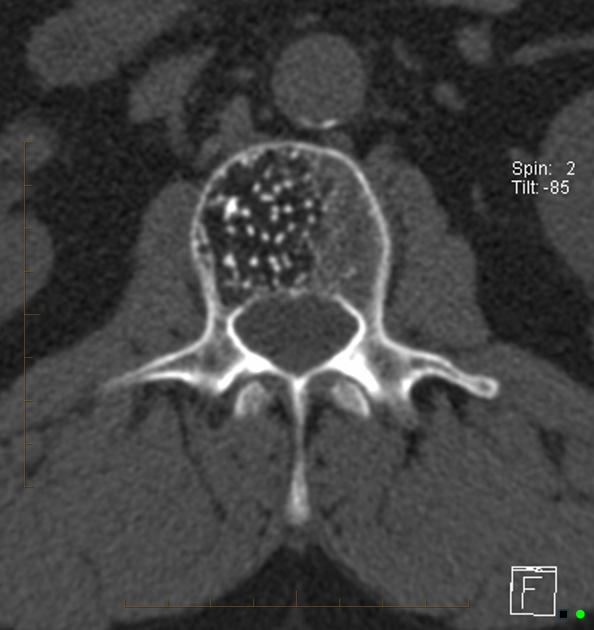The differential diagnosis for a vertebral body mass is broad and may range from a completely benign bone island to a malignant primary bone tumor.
Classification
Broadly, these lesions can be separated into:
non-neoplastic lesions
primary bone tumors
secondary metastatic disease
Non-neoplastic lesions
aneurysmal bone cyst (<2%): vertebral arch (60%); vertebral body (40%)
Brown tumor (an osteoclast reaction in hyperparathyroidism)
Primary bone tumors
Primary bone tumors of the spine are much less common than secondary metastatic disease:
plasmacytoma/multiple myeloma: most common primary bone cancer
chordoma: more common in sacrum (50%) and clivus (35%) than cervicothoracic vertebral column (15%)
-
Langerhans cell histiocytosis (eosinophilic granuloma)
vertebral body; can cause vertebra plana
-
vertebral arch predominance
Secondary metastatic disease
Vertebral metastases are significantly more common than primary bone tumors, especially in an older patient or one with known primary disease elsewhere.
Assessment of whether the bone lesions are sclerotic or lytic may help to narrow the differential diagnosis of primary disease if it is unknown.





 Unable to process the form. Check for errors and try again.
Unable to process the form. Check for errors and try again.